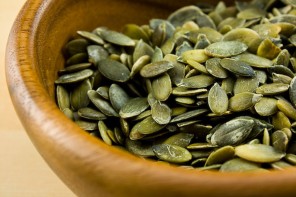Written by: Janine Erasmus
Rwanda’s annual baby gorilla naming ceremony took place earlier in June, with 18 of the endangered primate babies receiving names.
The Kwita Izina is the annual national festival that brings conservationists and gorilla enthusiasts from all over the world, to the village of Kinigi, located in Musanze District, at the foot of the Virunga Mountains in the north of the country.
This year’s event, the sixth edition, attracted not only visitors from China, Japan and the US, but also high-profile guests including Rwandan president Paul Kagame, the UN Environmental Programme’s (UNEP) executive director Achim Steiner, and American actor Don Cheadle, star of the 2004 genocide-focused hit Hotel Rwanda and a Goodwill Ambassador for UNEP.
The 2010 World Environment Day was also celebrated at the event.
“We believe that protecting the environment entails, among other things, empowering communities so that they change their attitudes and find alternative livelihoods that can promote sustainable and equitable development. And we are making headway,” said Kagame.
Naming the gorillas
The baby gorillas born in the first half of 2010 were named Agashya, Agatako, Gasore, Icyamamare, Igihembo, Imbuto, Inshuti, Inyungu, Isabukuru, Isoko, Murakaza, Ntambara, Teta, Turate, Ubuhamya, Umurage, Wakawaka, and Zoya.
Various agencies and governments were allotted their own gorilla – the Democratic Republic of Congo named its gorilla Igihembo (gift); while the Ugandan gorilla was named Isabukuru (anniversary). The US government named its gorilla Ubuhamya (testimony), and the Energy Globe Award named its baby Gasore (young man).
The Rwandan Speaker of Parliament Rose Mukantabana named a baby Icyamamare (celebrity), and UNEP’s gorilla was named Umurage (legacy).
Internet users from across the world were also given a chance to vote for a name through the UNEP´s website. Of the four suggestions – Yoda, Zoya, Ijabo and Hitamo – the people’s choice was Zoya.
The world’s children, too, were given an opportunity to choose a name, and they voted for “Wakawaka“, which means “to light up” in Swahili. The term is also the title of the official 2010 FIFA World Cup song, which is performed by Colombian singer Shakira and South African outfit Freshlyground.
“The US is trailing, in this regard, behind Rwanda,” said Cheadle. “To see their ability to get ahead of the curve should be an inspiration to other countries in the world to do the same and avail themselves of the resources that they have to address this problem.”
Traditional ceremony
The Kwita Izina (to give a name) is a traditional ceremony that has existed in Rwandan culture and society for hundreds of years, and was adopted three decades ago by the Rwandan Office of Tourism and National Parks as part of its gorilla conservation strategy.
The ceremony remained an internal function until 2005 when the organisation decided to launch it internationally, with the aim of promoting awareness of the plight of the mountain gorilla (Gorilla beringei beringei), one of the two Eastern gorilla subspecies, and the desperate need to protect them. The ceremony took its official name, Kwita Izina, in 2007.
The theme of the inaugural event was “Ensure the future of the mountain gorillas of Rwanda”. The next year’s theme was “Recognise the role of the international tourists who selected Rwanda as destination” while the theme for 2007 was “Caring for wildlife concerns us all”. The theme for 2008 was “Working together to conserve our wildlife”.
At the first five events 30, 12, 23, 20, and 18 mountain gorillas received names respectively. Last year’s event coincided with the UN-declared International Year of the Gorilla, and carried the theme “Celebrating the Year of the Gorilla”.
The theme for 2010 was “Raising global awareness of biodiversity conservation as we give names to our baby gorillas”.
Gorilla haven
The Virunga Mountains span three countries. They are a branch of the Albertine Rift, part of East Africa’s Great Rift Valley, and feature eight volcanoes, of which six are dormant. There are three national parks within the range – the Virunga National Park in the Democratic Republic of Congo; the Volcanoes National Park in Rwanda; and the Mgahinga Gorilla National Park in Uganda
The Virungas are famous as the last haven on earth for the mountain gorilla, which is listed as endangered on the Red List of the International Union for the Conservation of Nature. About 750 individuals still exist, more than half in Virunga National Park and the rest in Uganda’s Bwindi Impenetrable National Park, about 35km away – there is speculation that this population might be a separate subspecies, but to date this has not been established.
The Karisoke Research Centre, established by renowned primatologist Dian Fossey in 1967, is here in the Volcanoes National Park. The facility takes its name from the two peaks between which it sits – Mount Karisimbi and Mount Visoke.
Karisoke holds a massive amount of priceless data on mountain gorillas in its 40-year-old database, including information on gorilla behaviour and everyday life, their habitats, and conversation efforts and results.
Source: Media Club South Africa
The liveeco team







